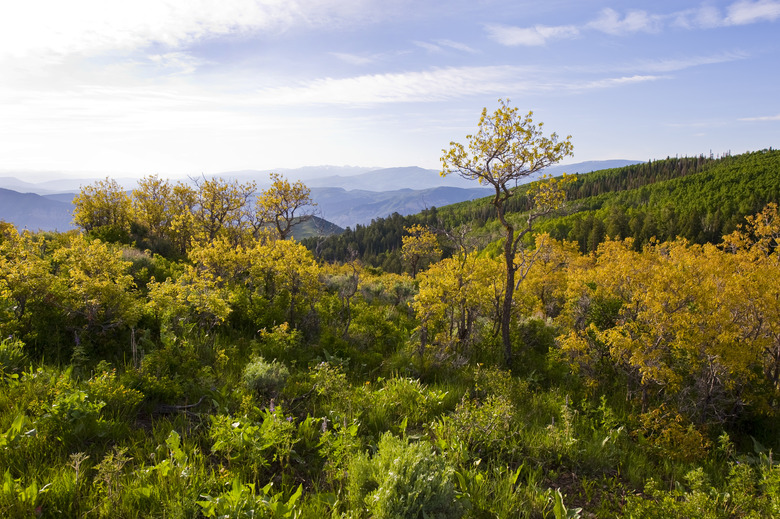Scrub Oak Information
When most people think of oak trees, they picture the traditional towering oak with its thick trunk, impossibly tall canopy, broad leaves and abundant acorns. However, a smaller member of the oak family called the scrub oak plays an equally important role in its native ecosystem.
TL;DR (Too Long; Didn't Read)
Scrub oak (_Quercus berberidifolia_) is a dense evergreen shrub with spiny leaves as well as catkins and acorns. The tree is smaller than its oak cousins and only reaches 8 to 15 feet in height, depending on species. Thanks to its fuzzy trichome hairs on the underside of its leaves, the scrub oak can withstand intense sunlight and drought. It also resprouts after wildfire and serves as an important natural resource for Indigenous communities.
Scrub Oak Description
Scrub Oak Description
The scrub oak (Quercus genus, including Quercus berberidifolia), or oak bush plant, is an evergreen or semi-evergreen member of the beech family that only reaches 8 to 15 feet in height. The plant's foliage is thick with spines along the edges similar to those seen on holly leaves. Each leathery leaf is shiny on one side and hairy on the underside. This fuzz, called trichome hairs, enables the tree to survive extreme sunlight or drought by increasing the surface area of the leaf. Different species of scrub oak have different numbers of trichome hairs, so counting those individual hairs helps arborists differentiate between scrub oak species. Scrub oak shrubs have flowers or catkins like their traditional oak cousins and drop acorns in late summer or early fall.
Value of Scrub Oak
Value of Scrub Oak
The scrub oak may not be the largest tree in the ecosystem, but it serves important functions. The first of these is its role as a member of the understory flora. These plants grow beneath the forest canopy and provide homes and food for many forest animals and insects. Understory plants also help each other grow, acting as companion plants that shade young, tender shoots and enable them to develop.
Thanks to its fuzzy trichome hairs, the oak bush plant is notoriously resistant to drought, making it perfect for arid climates such as the chaparral ecosystem in California. In fact, the plant is so valuable to the area that its very name comes from the Spanish word "chaparro," which means scrub oak. Even wildfire is no match for this shrubby tree, which resprouts after the wildfire has passed. For this reason, the scrub oak plays an important role in post-wildfire forest recovery.
For Indigenous communities, the scrub oak is a versatile natural resource that provides food, medicine and raw wood necessary for fuel as well as for building homes and making weapons. For this reason, Native American groups have been instrumental in attempts to protect the scrub oak from the risks of urbanization.
Cite This Article
MLA
Mayer, Melissa. "Scrub Oak Information" sciencing.com, https://www.sciencing.com/scrub-oak-information-6157051/. 22 November 2019.
APA
Mayer, Melissa. (2019, November 22). Scrub Oak Information. sciencing.com. Retrieved from https://www.sciencing.com/scrub-oak-information-6157051/
Chicago
Mayer, Melissa. Scrub Oak Information last modified March 24, 2022. https://www.sciencing.com/scrub-oak-information-6157051/
